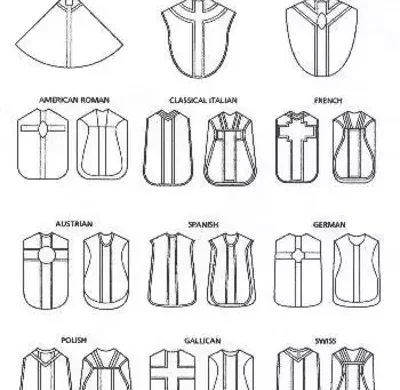
Monk habits, historical garments made in monasteries, had unique designs, each order having its own variations. The patterns and techniques were kept secret. With changing times, habits faded, and the knowledge of making them vanished. Traditional Monk Habit patterns and construction techniques are now disappearing with the loss of skilled tailors.
Like this:
Like Loading...
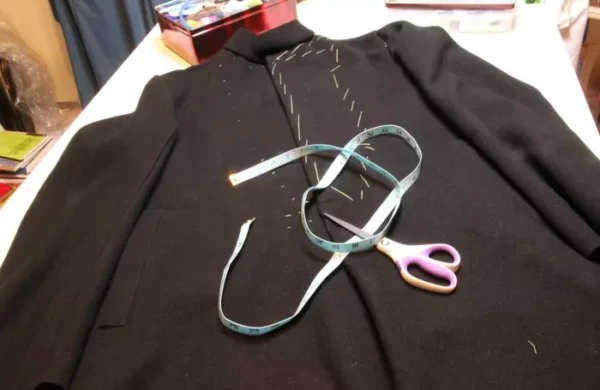
Returning Home – Monastic Habit – a young tailor from a monastery asked help with fitting, construction, and pattern drafting skills for a Monk Habit. Faced challenges with historical pattern blocks and sleeve fitting. After extensive research, they discovered instructions for drafting the Monk habit, successfully completing the pattern.
Like this:
Like Loading...
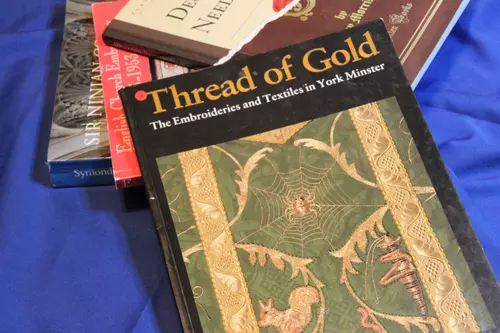
In “Books: The Next Best Thing Part III,” the focus is on Ecclesiastical Giants from the past two centuries. discovering “Thread of Gold: The Embroideries and Textiles of York Minster.” This book, edited by Elizabeth Ingram, offers the history of Ecclesiastical Embroidery and Vestments at York Minster. From pre-Reformation origins to fascinating stories about Queen Victoria’s silk and the restoration of the Great Processional Banner, the book provides a rich visual and historical embroidery.
Like this:
Like Loading...
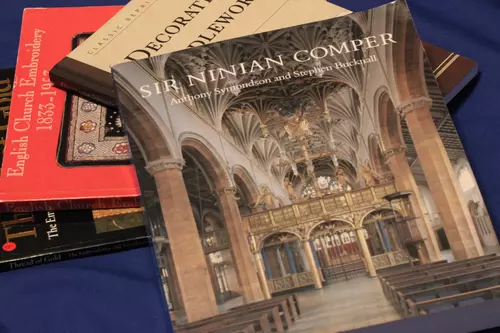
Ecclesiastical Sewing looks at Sir Ninian Comper’s work in the book “Sir Ninian Comper” by Anthony Symondson and Stephen Bucknall. Born in 1864, Comper aimed to make beautiful things that lead people to worship God. The book, with black-and-white photos, shows Comper’s creations like altars and beautiful copes with detailed embroidery. His idea was simple: “A person should like beautiful things from a young age.” The book gives a peek into Comper’s lasting influence on Ecclesiastical design.
Like this:
Like Loading...

Ecclesiastical Sewing explores new books on Ecclesiastical Giants as an alternative to attending the Giants of Gothic Revival event at the Victoria and Albert Museum. The collection includes works by Augustus Welby Northmore Pugin, such as “Pugin’s Gothic Ornament,” “Pugin’s Floral Ornament,” and “Colored Plates from Pugin’s Ecclesiastical Ornaments.” These books offer insights into Pugin’s intricate designs and patterns, from wood and stone carving to delicate floral motifs. Additionally, Pugin’s “Glossary of Ecclesiastical Ornament and Costume” provides valuable insights into various Ecclesiastical terms.
Like this:
Like Loading...
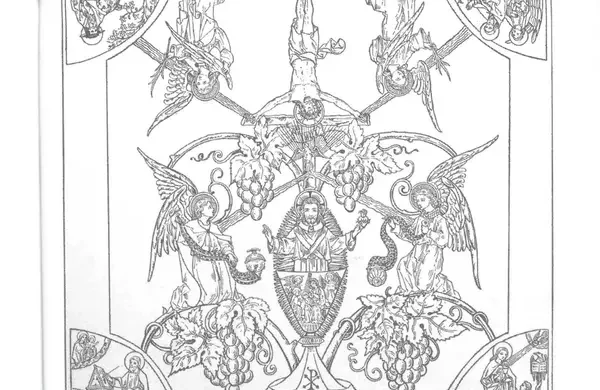
Alethea Wiel, a skilled Ecclesiastical Artisan from 1894, designed a Chalice Veil rich in symbolism. The illustration includes a chalice on seven rocks representing the Seven Sacraments, with the Nativity engraved on the chalice. Angels, Luke, and John surround Christ, while the reverse side showcased the Crucifixion with angels shielding their eyes. A vine, symbolizing Christ, intertwines throughout the design.
Like this:
Like Loading...
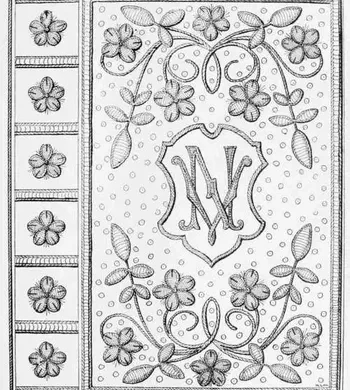
Ella Rodman Church’s 1886 book “Artistic Embroidery” offers valuable insights into color theory and embroidery techniques. Focusing on Ecclesiastical Embroidery, the book explores the proper arrangement of colors and provides advice on pairings and placements. It also features ideas for creating ornate Bible covers, reflecting the historical significance of design book covers. This vintage resource serves as a treasure for those interested in the art of church embroidery.
Like this:
Like Loading...
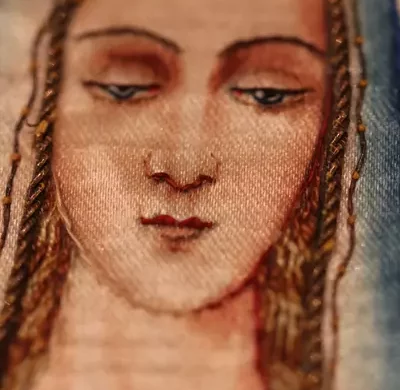
A trip to the Ursuline Center to explore interested items related to Ecclesiastical Embroidery and Vestments. The travel included stops at the Museum and the artist tower, and discovered a collection of hand-embroidered pieces and a few Ecclesiastical Banners that were hand-painted.
Like this:
Like Loading...
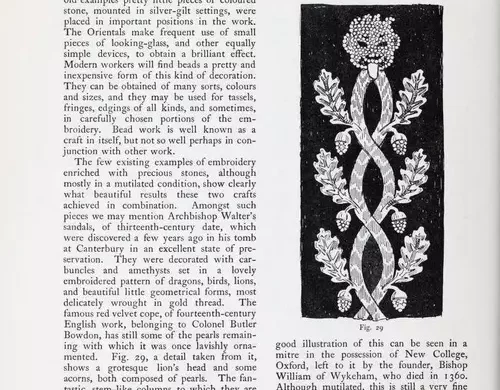
Reading time from Ecclesiastical Embroidery with Grace Christie’s book, ‘Embroidery: A Collection of Articles on Fine Needlework.’ Explore a 14th-century red cope from the Butler Bowden Family, adorned with pearls and a charming lion’s head. Learn about the cope’s survival through history, now in the Metropolitan Museum. Discover the use of precious stones in Ecclesiastical Embroidery and the unique Opus Anglicum technique. Let this book be your companion on a stormy night.
Like this:
Like Loading...
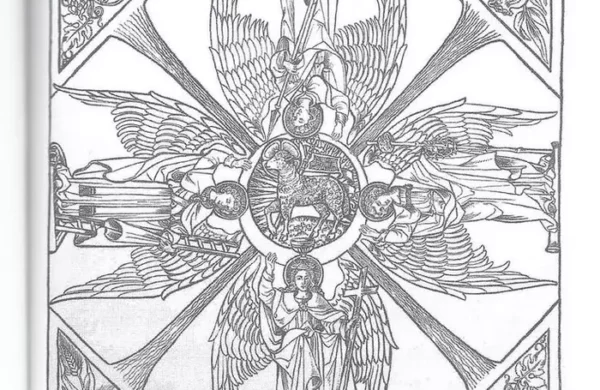
Weekend thoughts on Church Sewing: Looking at a Chalice Veil design from “Design for Church Embroidery” by R.A. Alethea Wiel. It has an Agnus Dei and four angels, each symbolizing something. The balanced design, shapes, and careful placement make it beautiful. Thinking about its artistry makes us wonder about true beauty in modern designs and what we can learn. Also, seeing the design in Or Nue embroidery on different platforms adds a touch of history.
Like this:
Like Loading...

The inspiration for current Ecclesiastical Embroidery projects comes from Lucy Mackrille’s book, featuring the Victorious Angus Dei with a quatrefoil frame. The Italian Stitch, damascene stitch, and goldwork embroidery threads are used, drawing from a wealth of knowledge provided by Mackrille’s book and online mentors. The fear of trying new techniques diminishes with thorough reading and guidance.
Like this:
Like Loading...
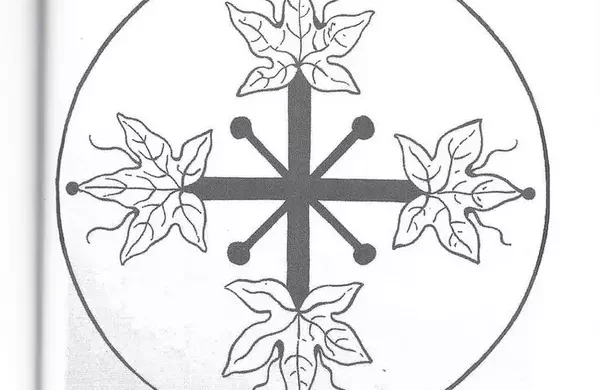
Receiving new Ecclesiastical Embroidery books among them is “Design for Church Embroidery” by R.A., Althea Wiel, originally published in 1894. This treasured book, now republished, offers a glimpse into historical Ecclesiastical vestment designs. One notable design, intended for a chalice veil, intricately symbolic of Christ, His Sacred Heart, and symbolic elements like grapes and vines. Another design features a simple yet elegant cross adorned with ivy leaves, suggesting color choices for stitching. These designs provide a valuable connection to the artistry of the past in Ecclesiastical Embroidery.
Like this:
Like Loading...
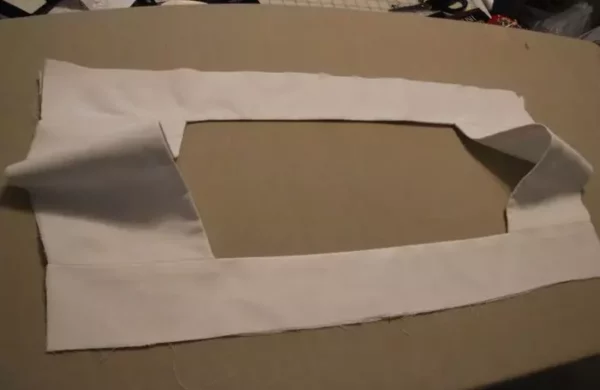
Working on creating clear and simple step-by-step directions for sewing a square-yoke surplice, a traditional church vestment. Utilizing old vestment books, a two-piece yoke pattern is drafted for easy construction.
Like this:
Like Loading...

Old Books Make Great Reads: Discovering the rich history of Opus Anglicanum through the pages of vintage books, details of Ecclesiastical Embroidery and Altar Frontals. These treasures provide insights into the origins of vestments, such as the chasuble and alb, and their evolution over centuries.
Like this:
Like Loading...
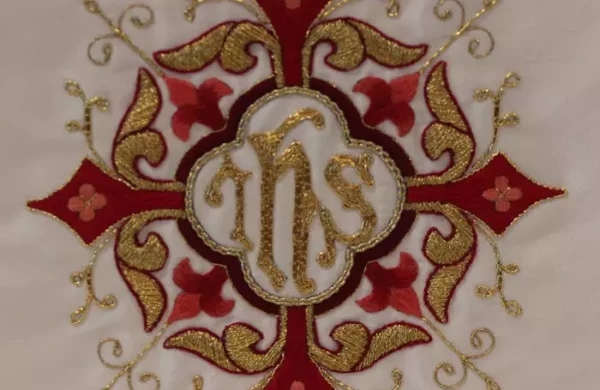
Welcome to Ecclesiastical Sewing! This site is dedicated to a passion for designing and creating Church Linens, vestments, and ecclesiastical embroidery projects. With a background in costume design, there’s exploration of couture and custom sewing techniques for Church Vestments. Stay tuned for updates on ongoing projects, Ecclesiastical Embroidery Designs, and tips for creating your own Church Vestment Projects.
Like this:
Like Loading...
















You must be logged in to post a comment.